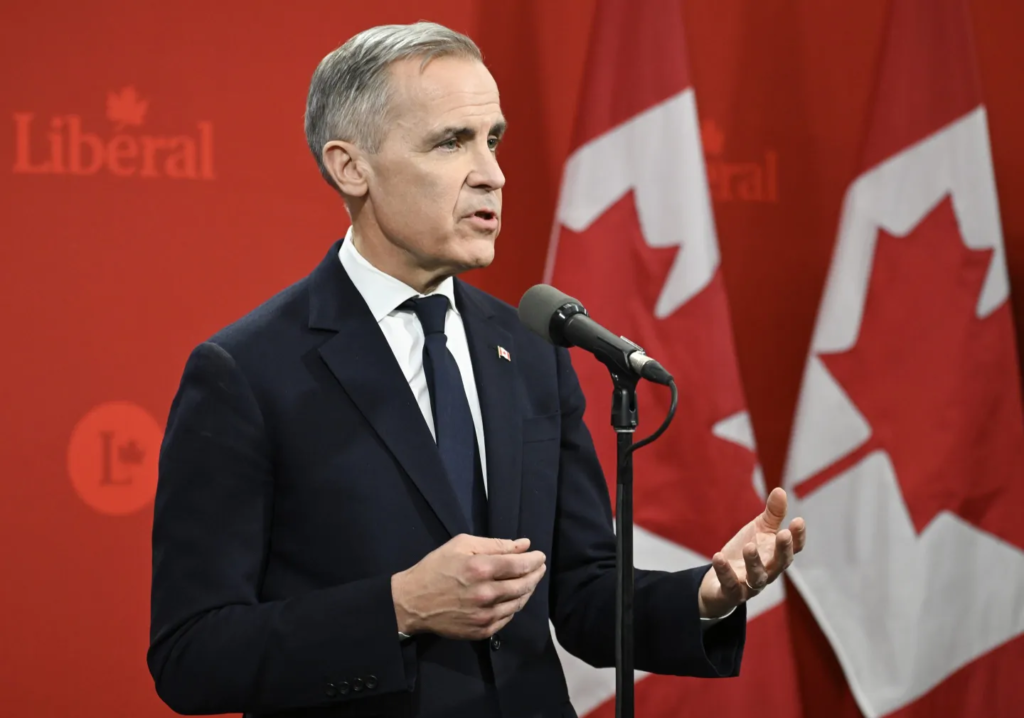
Mark Carney has officially won the race to succeed Justin Trudeau as Canada’s prime minister, vowing to take a strong stance against U.S. President Donald Trump in the ongoing trade dispute. His leadership comes at a time of economic uncertainty and shifting political dynamics.
Carney’s Landslide Victory in the Liberal Leadership Race
The former governor of the Bank of Canada and Bank of England secured a decisive win in the Liberal Party leadership contest, earning an overwhelming 85.9% of the vote. He defeated former Finance Minister Chrystia Freeland and two other rivals in what was seen as a pivotal moment for Canada’s political landscape.
Loud cheers erupted from a crowd of approximately 1,600 party members in Ottawa as the results were announced. The party reported that more than 150,000 Canadians cast their ballots in the leadership race.
Carney vs. Trump: A New Trade War Begins
In his victory speech, Carney, 59, took a direct stance against Trump’s recent tariffs on Canadian goods and his controversial remark about making Canada the 51st U.S. state.
“Americans should make no mistake,” Carney declared. “In trade, as in hockey, Canada will win.”
The U.S. imposed 25% tariffs on Canadian imports last Tuesday but later reversed course to exempt goods compliant with an existing trade agreement. Canada retaliated with counter-tariffs, a move supported by outgoing PM Justin Trudeau, who accused Trump of attempting to destabilize the Canadian economy.
Carney reaffirmed this stance, stating that his government will maintain tariffs on U.S. imports until Washington shows respect.
From Banker to Prime Minister
Despite his extensive financial expertise, Carney has never held elected office before. His transition from global banking to Canadian politics has been a defining feature of his rise to power.
Carney inherits a minority government and faces the challenge of uniting the country amid economic concerns and a politically divided electorate. His main opponent, Conservative leader Pierre Poilievre, has already begun attacking Carney’s policies, portraying him as an extension of Trudeau’s leadership rather than a fresh start.
Political Landscape and Upcoming Elections
The Liberals, once trailing the Conservatives by over 20 points, have seen a political resurgence due to Trump’s aggressive trade policies and nationalist rhetoric. Some polls now show them running neck-and-neck with Poilievre’s party.
Carney could call a snap general election or risk a no-confidence vote from opposition parties later this month, which may trigger an early election.
Carney’s Policy Priorities
Positioning himself as a centrist leader, Carney has outlined key policies that signal a shift from Trudeau’s left-leaning governance:
- Energy Development – Support for major energy infrastructure projects, including pipelines.
- Housing Investments – Plans for affordable housing initiatives to tackle Canada’s real estate crisis.
- Economic Diversification – Reducing dependence on U.S. trade and promoting inter-provincial commerce.
- Border Security – Addressing U.S. concerns about migration and fentanyl trafficking.
- Federal Spending – Pledging to cap government expansion after a 40% increase under Trudeau.
A Nation at a Crossroads
Carney’s leadership comes at a time of rising nationalism and economic uncertainty. With Trump poised to enforce stricter trade measures, Canada’s economy could face significant challenges in the months ahead.
In a parting message, Trudeau called for unity, stating that Canada is facing an “existential challenge” from its closest neighbor.
As Carney takes the helm, Canadians will be watching closely to see if he can deliver on his promises and defend the nation’s economic interests on the global stage.
